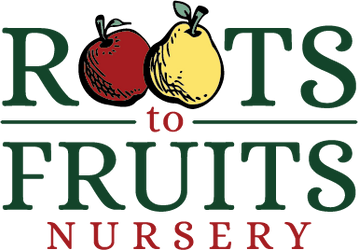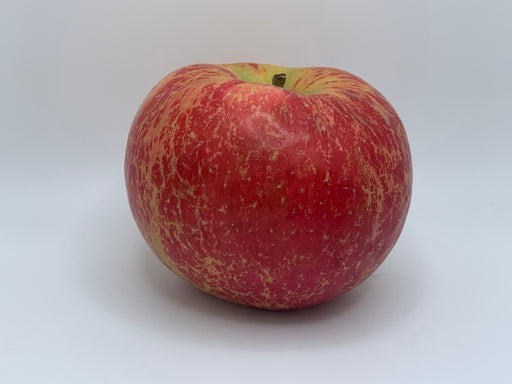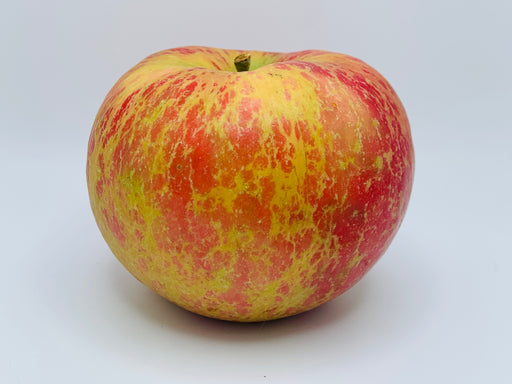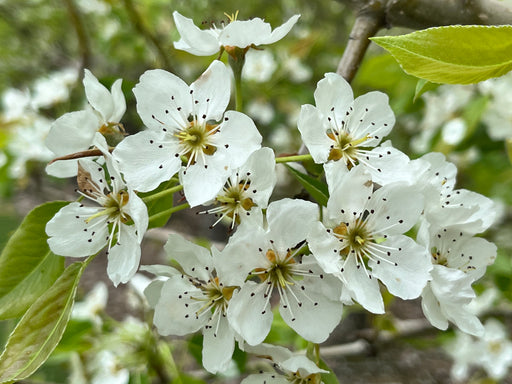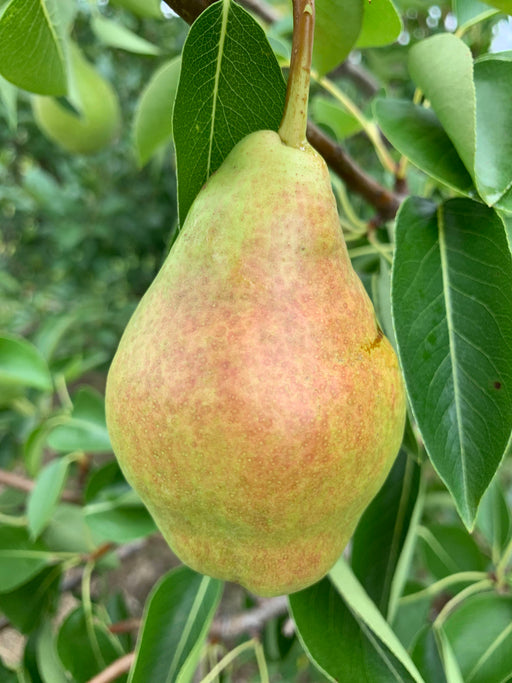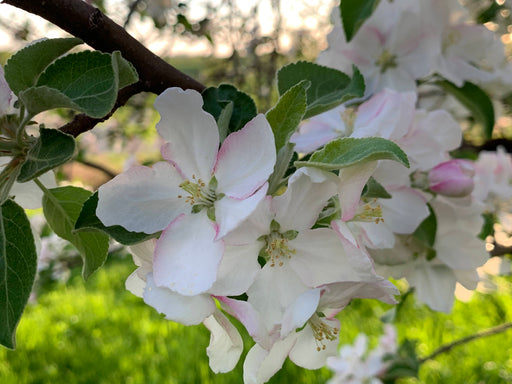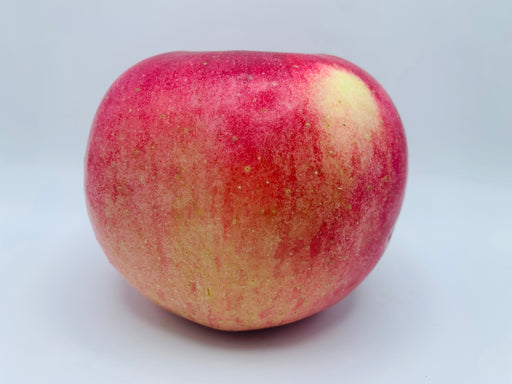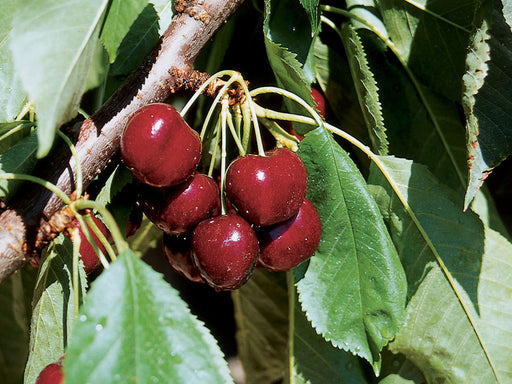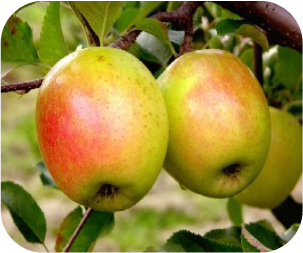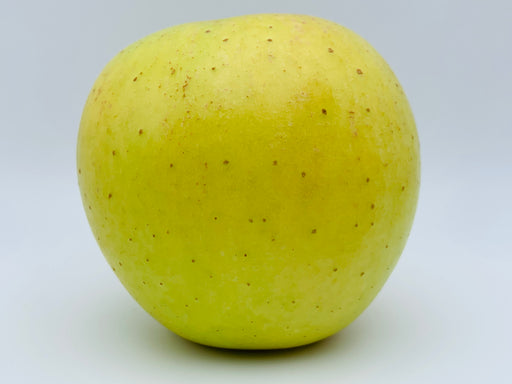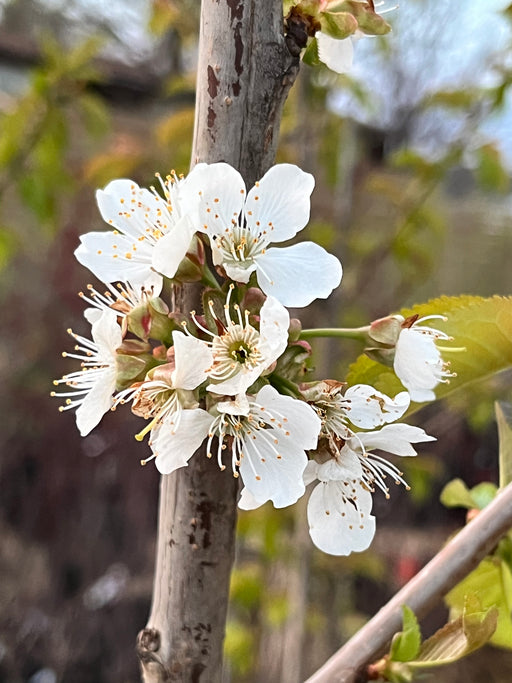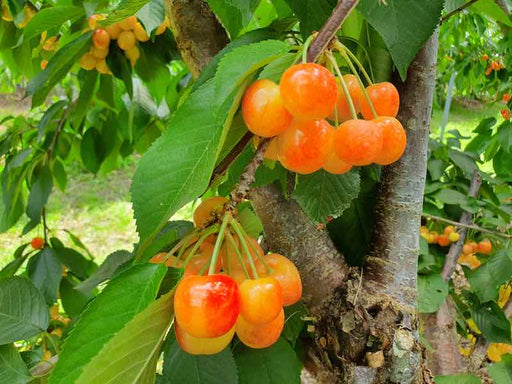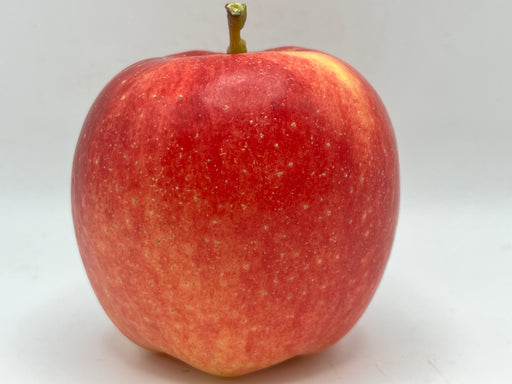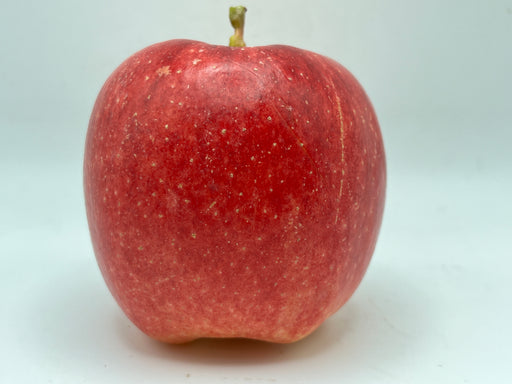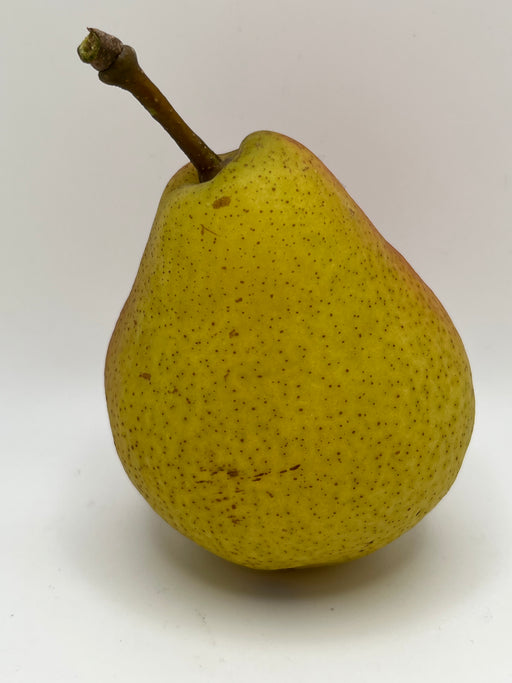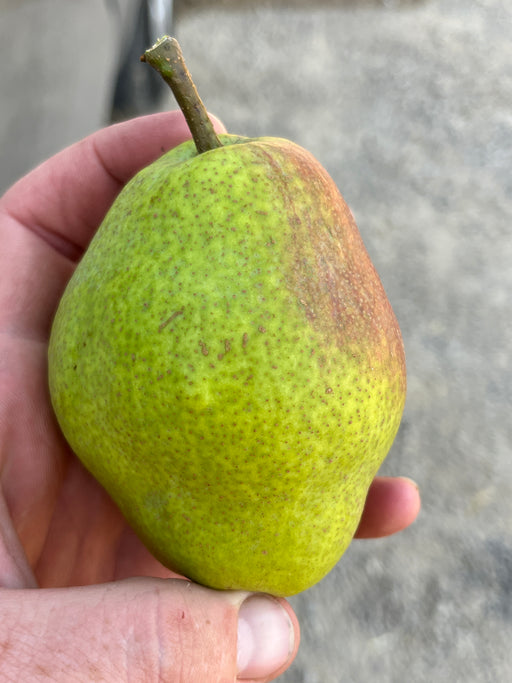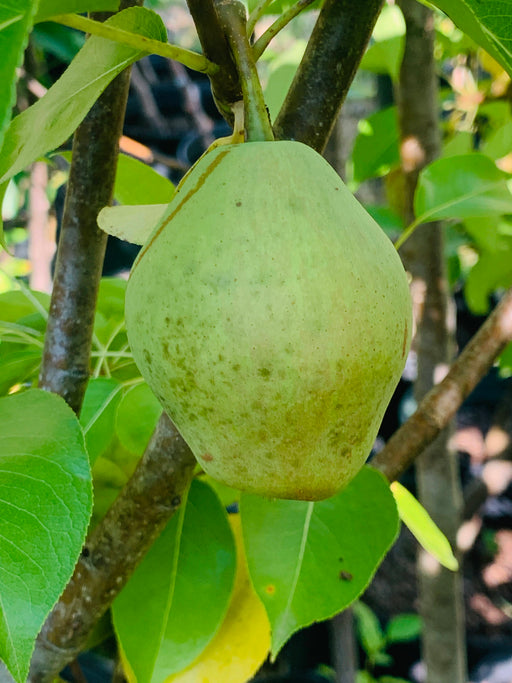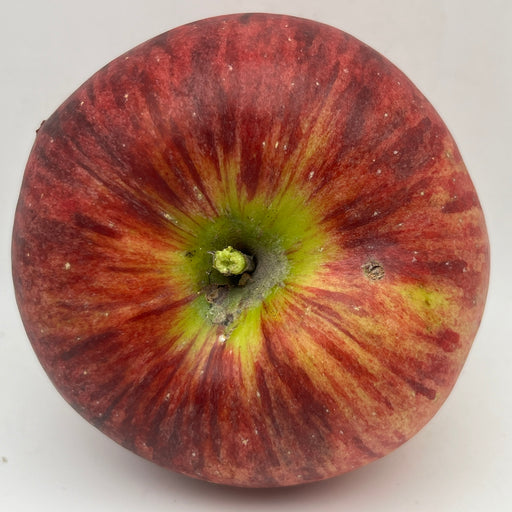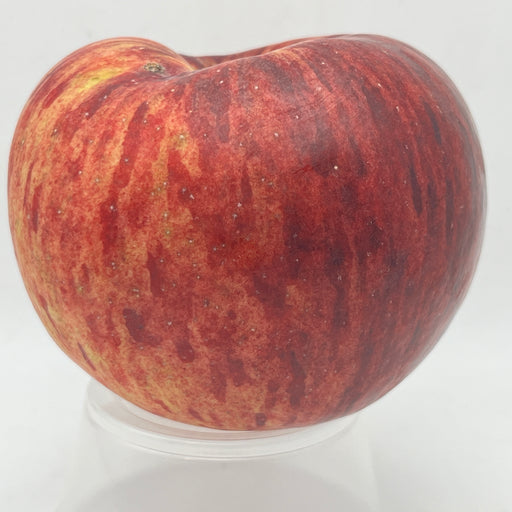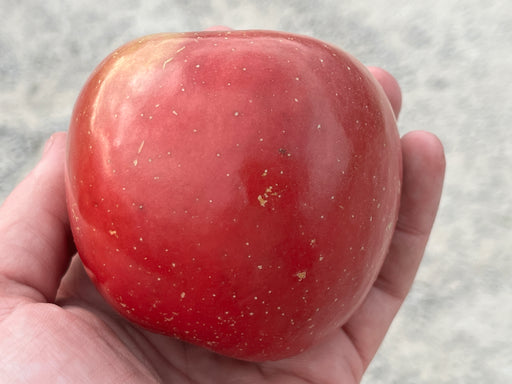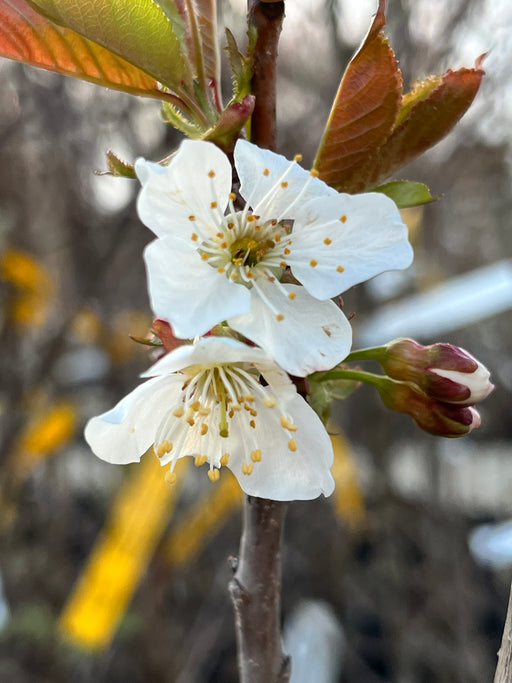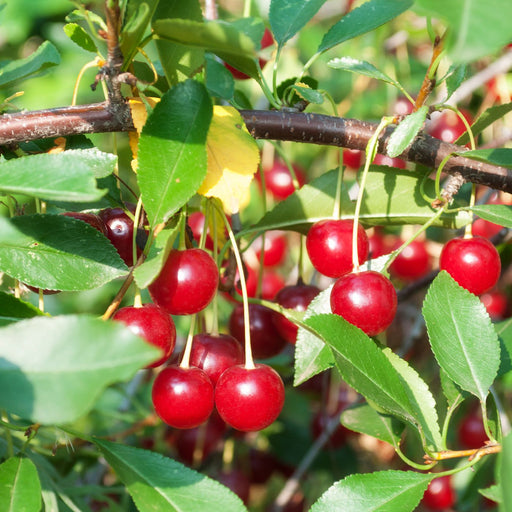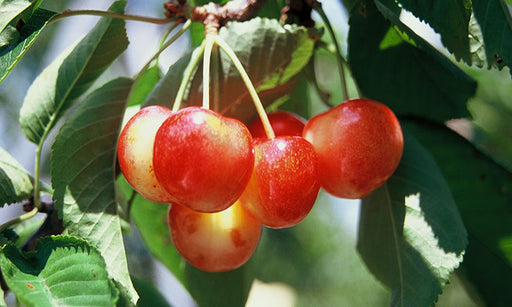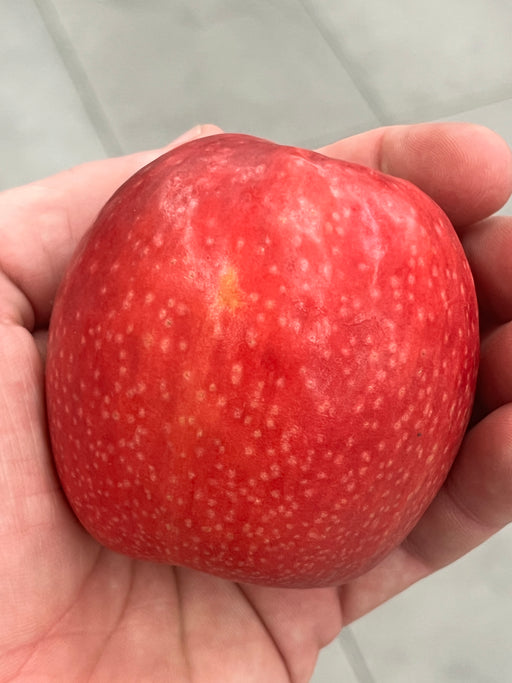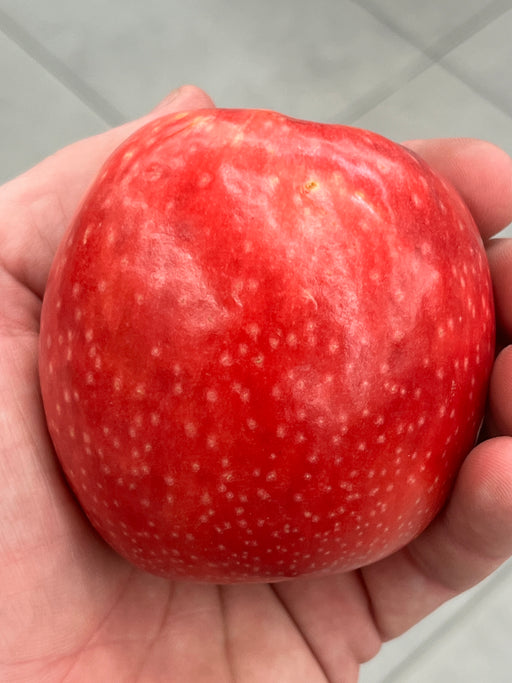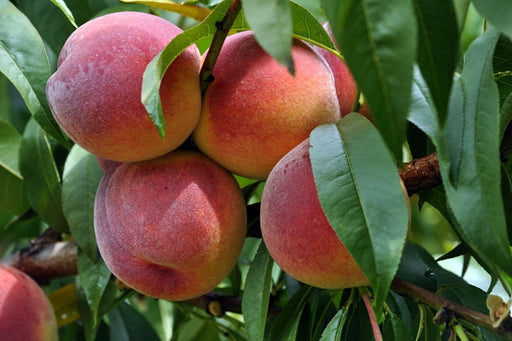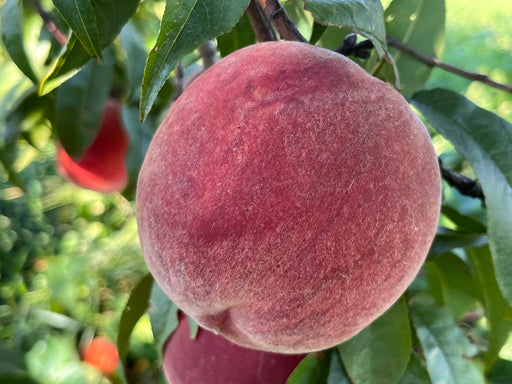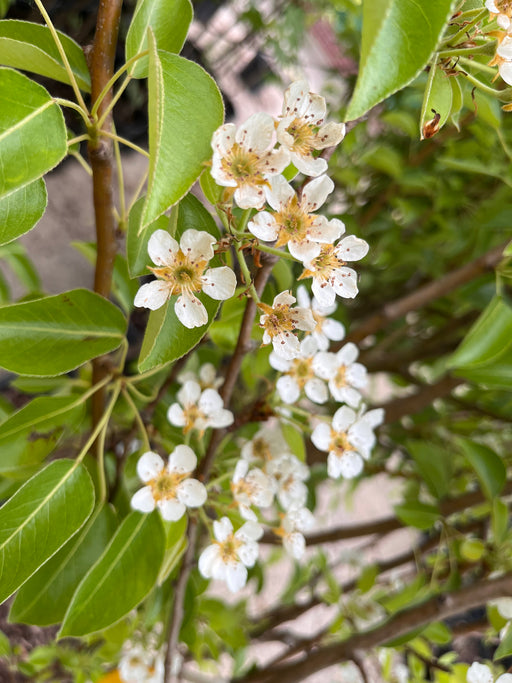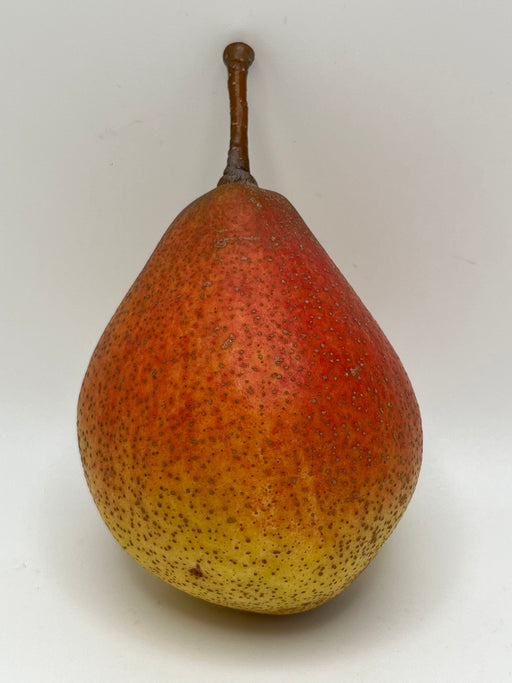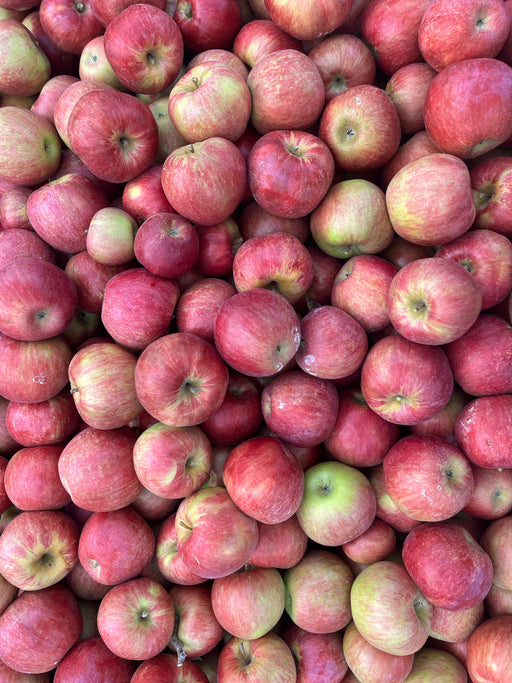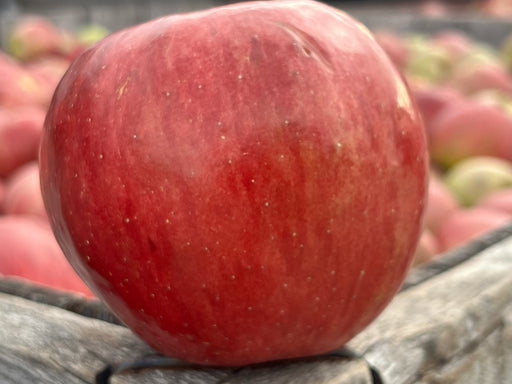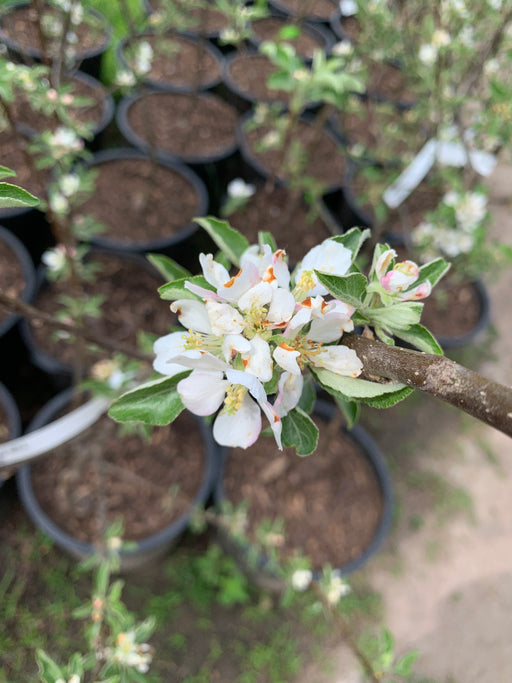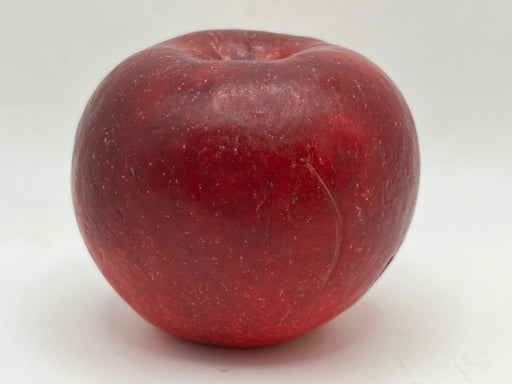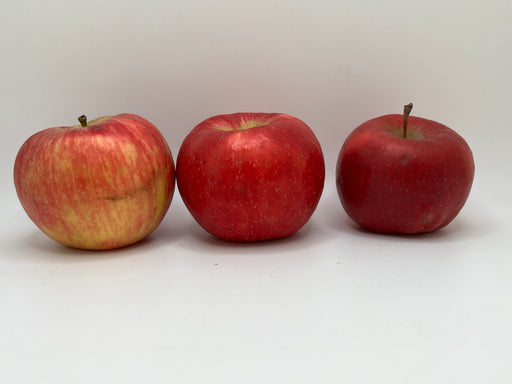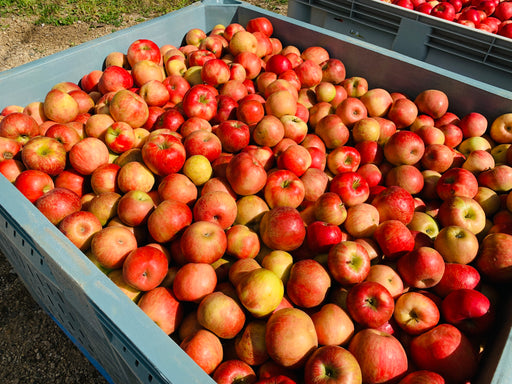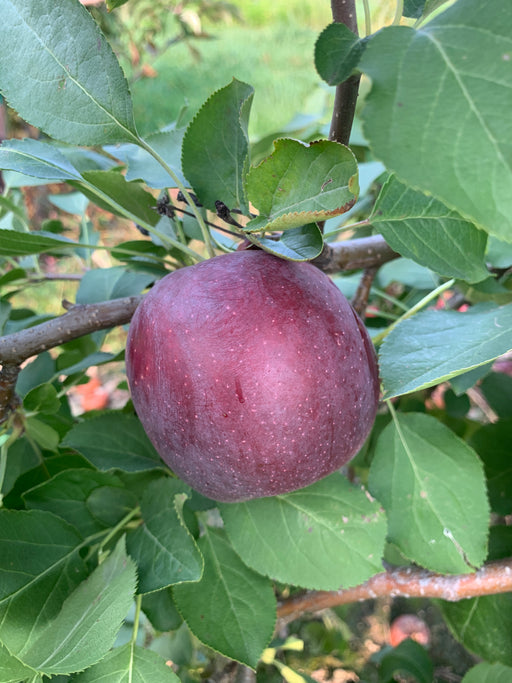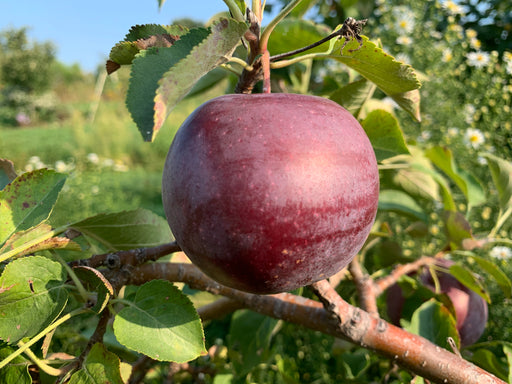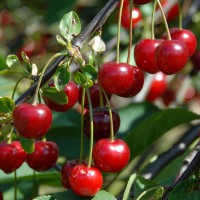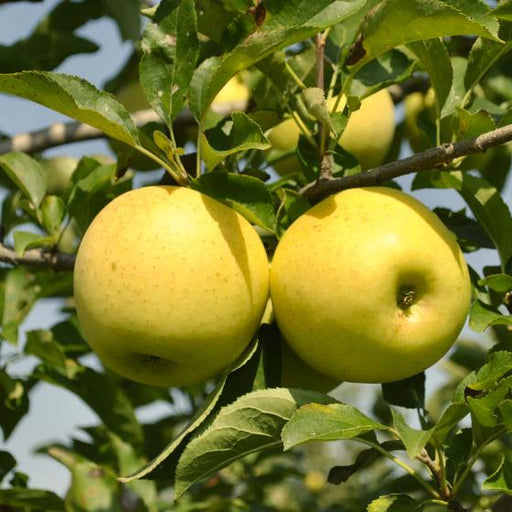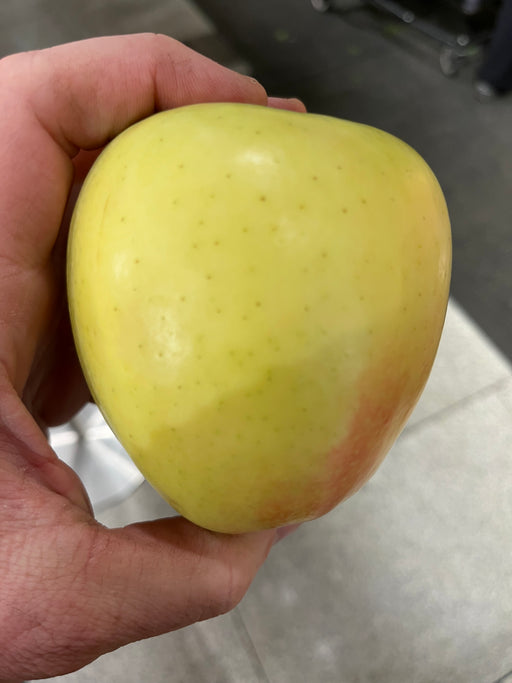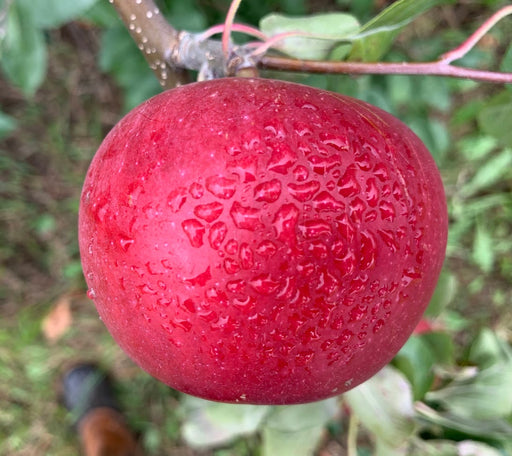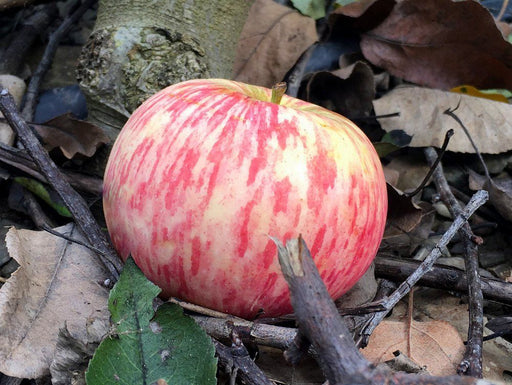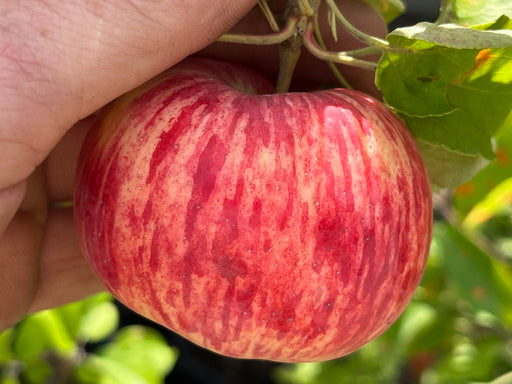Fruit Trees
Our apple trees, like many fruit trees, are propagated by grafting. There are two parts to an apple tree. The scion is the fruiting part of the tree, which gives you the variety of the apple, and the rootstock, which influences the mature size and hardiness of the tree, and determines the time it takes for the tree to fruit. We sell Standard, Semi-Dwarf, Dwarf, and Mini-Dwarf trees that do not require a lot of space and yet, will bear large fruit.
A few key notes on successful planting methods:
- Trees must be planted in well-drained soil
- Six hours of sunlight; full sun preferred
- Stake all trees for the first two years
- Dwarfs must have permanent stakes
- Tree guards should be used
- Plant at least two different apple tree varieties for Cross-Pollination
- Plant disease-resistant trees for less maintenance; we are happy to help make any suggestions you might need
We categorize our apple trees into at least five sizes: Petite, Maiden, Field Ready, Hand Select, and Container depending on the size of the tree. The Petite tree is our smallest graded tree less than 2 years in age; Maiden trees are usually 2 years old and are branchless. These are also called whips and will bear in 2-3 years. A Field Ready tree is 2-3 years old and might have some lateral branching, be thicker above the graft, and will bear in 1-2 years. The Hand Select trees are only about 20% of trees we have and are 3 year old trees, 6-9’ tall and can be heavily branched. You can expect fruiting on a Hand Select tree in about a year.
Honeycrisp Apple Trees
If you've ever heard of an apple- its probably the Honeycrisp. The University of Minnesota introduced this cold hardy apple variety in 1991 and it ...
View full detailsBartlett Pear Tree
First discovered as a chance seedling in southern England in 1770 by a gentleman named John Stair. First imported to the US in 1790 and planted on ...
View full detailsWolf River Apple Tree
This is an enormous apple. First discovered in 1875 along the Wolf River in Wisconsin- this apple soon became a popular baking apple because you on...
View full detailsLapins Cherry Tree
Lapins cherry is a dark red to almost black, large-sized cherry variety known for its sweet and juicy flavor. It is a self-pollinating variety, whi...
View full detailsGoldRush Apple Tree
Introduced from the Purdue-Rutgers-U of I Apple Breeding Program in 1994, the GoldRush apple is an excellent late season apple. Originally known as...
View full detailsRainier Cherry Tree
Rainier cherry was developed in 1952 at Washington State University. It is a cross between the Bing and Van cultivars. Rainier cherries are one of ...
View full detailsAmbrosia Apple Tree
Discovered as a chance seedling in the Similkameen Valley in British Columbia, Canada in the 1990s. Because it was discovered by chance, there is n...
View full detailsAyers Pear Tree
The Ayers pear (Pyrus communis 'Ayers') is a medium-sized pear cultivar that is commonly grown in the United States. It was developed in Georgia by...
View full detailsKieffer Pear Trees
Said to have been discovered in the late 18th century in Philadelphia on a fruit farm owned by Peter Kieffer but now is planted widely across the e...
View full detailsCortland Apple Tree
Created at Cornell University’s Agricultural Station in 1898, the Cortland Apple is a popular tree around the Great Lakes even today. It is now the...
View full detailsFuji Apple Tree
First bred in the 1930s, this apple has grown to be one of the most popular apples sold around the world. Its lengthy storage abilities and crisp t...
View full detailsBing Cherry Tree
The Bing cherry is a popular variety of sweet cherry that originated in Oregon, USA, in the late 19th century. It is named after Ah Bing, a Chinese...
View full detailsWhite Gold Cherry Tree
Developed in Geneva, New York in the early 2000s, this cherry is a cross between a Stella and Emperor Francis sweet cherries. It is hardy to Zone 5...
View full detailsPink Lady® Apple Trees
Bred at the Department of Agriculture in Western Australia in 1970 by researcher John Cripps. He crossed the red Australian apple Lady Williams wit...
View full detailsRedhaven Peach Tree
Another freestone peach, the Redhaven Peach ripens in mid July and is the industry standard peach tree. Early or late ripeness depends on how many ...
View full detailsMoonglow Pear Trees
The Moonglow Pear’s brownish-green skin covers soft flesh with a sweet mild flavor. It's an early producer with fruit ready for picking in mid-Augu...
View full detailsSweet Sixteen Apple Tree
This University of Minnesota variety was introduced in 1977 and is a cross between the Northern Spy and MN 447 (Frostbite) Apples. Commercially via...
View full detailsCrimsonCrisp® Apple Tree
First created at Rutgers Fruit Research Center in New Jersey in 1971 and is a cross between apple PCF2-134 and PRI 669-205. The CrimsonCrisp® was c...
View full detailsCameron Select Red Honeycrisp Tree
Please see our main Honeycrisp page for a general description. The difference between the Cameron Select and the standard Honeycrisp is a matter of...
View full detailsArkansas Black Apple Tree
Introduced 1870 in the orchard of a Mr. Brathwaite, the fruit, a variety of Winesap, round and of medium size. The flesh is yellow, fine grained, c...
View full detailsKristin Sweet Cherry Trees
The ‘Kristin’ cherry is like the hidden gem of the cherry world, with a story that began in 1938 from a careful cross between ‘Emperor Francis’ and...
View full detailsGolden Delicious Apple Trees
First discovered in Clay County, West Virginia in the late 1890s as a chance seedling of a Grimes Golden or Golden Reinette. When it became commerc...
View full detailsZestar Apple Tree
Introduced in 1999 by the University of Minnesota as another cold hardy apple. The Zestar, also called Minnewashta, is a cross between the State Fa...
View full detailsDuchess of Oldenburg Apple Tree
This regal apple is named for Grand Duchess Catherine of Oldenburg, sister to Czar Alexander I and originates from the late 17th century in Eastern...
View full details